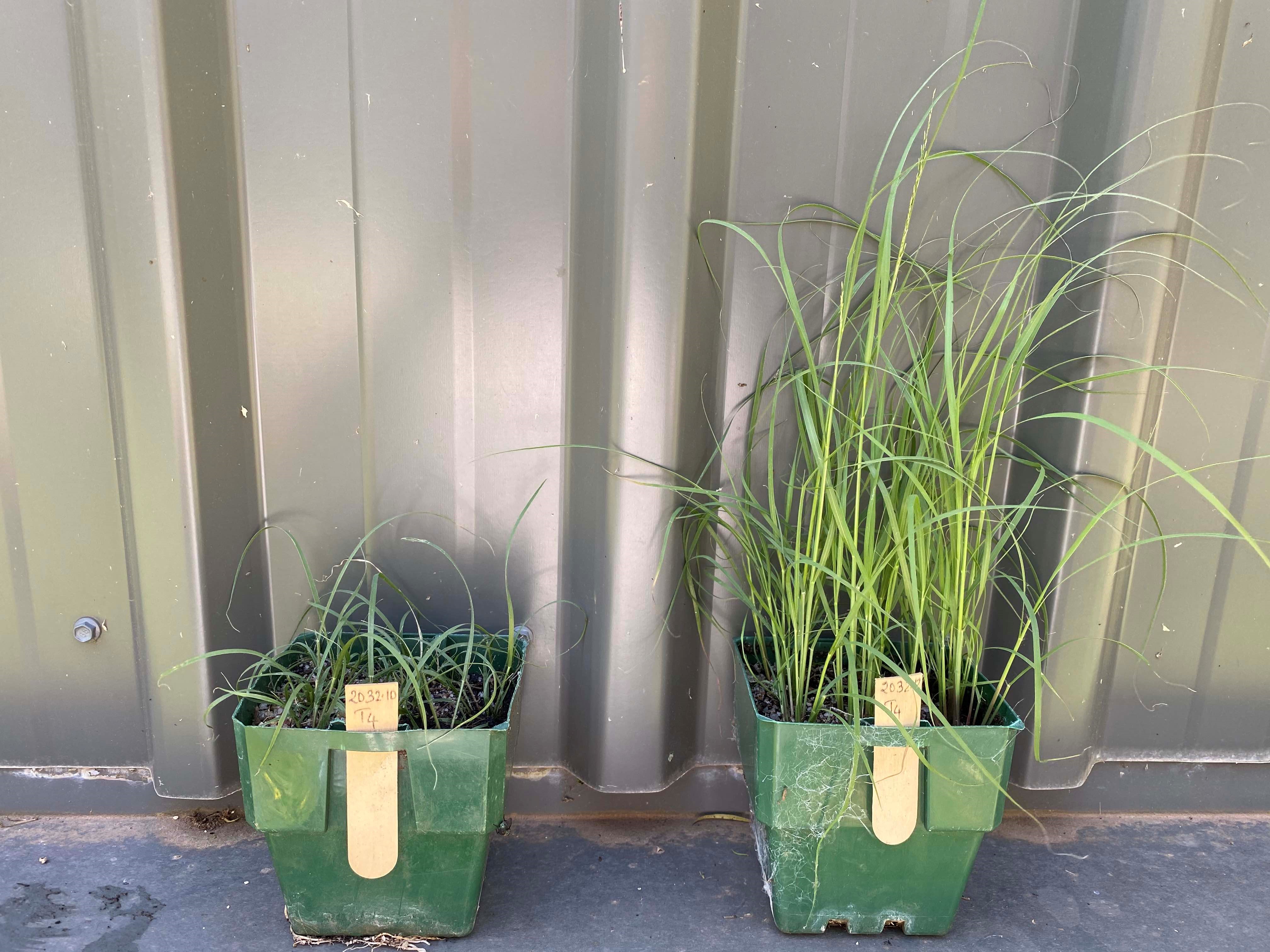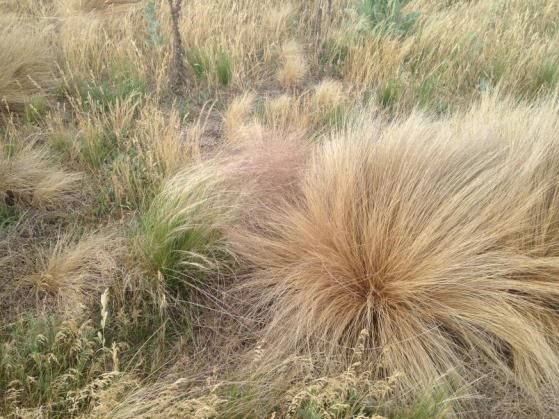New South Wales, Australia
22 March 2021

Both susceptible (on left) and resistant (on right) African lovegrass populations to the herbicide flupropanate have been identified on the Monaro. (Photo: Plant Science Consulting).
In an Australian first, the results of a preliminary survey on the Monaro investigating the possibility of herbicide resistance in African lovegrass has identified multiple sites where flupropanate resistance has developed.
The resistance survey arose following the identification of populations of serrated tussock with flupropanate resistance on the Monaro in 2017, with land managers expressing their concerns about similar resistance possibly developing in African lovegrass.
South East Local Land Services funded a preliminary survey of herbicide resistance in African lovegrass with samples collected in 2020. Senior Agricultural Advisor with Local Land Services, Jo Powells was not surprised by the results but was disappointed none the less.

A herbicide resistant serrated tussock plant (on left) identified on the Monaro in 2017 (Photo: Jo Powells).
“The results from this initial resistance screening work indicated that five of the twelve Monaro populations of African lovegrass tested were resistant to flupropanate and a further three populations were showing the development of this resistance” she said.
Herbicides are one of the main weed control options for African lovegrass. Only two main herbicides options are available, Flupropanate (e.g. Taskforce, Tussock etc.) and Glyphosate with Flupropanate being the most commonly used herbicide for perennial grass weed control on the Monaro.
The continual and long-term reliance on any one herbicide will accelerate the development of herbicide resistance within plant populations. The presence of large weed populations such as the Monaro’s African lovegrass, increase the likelihood of this natural evolution of resistance developing.
“These finding add yet another challenge to managing African lovegrass but also serves as a warning against reliance on just one weed control technique” Jo said.
“Flupropanate will continue to play a vital role in helping land managers control this invasive weed across the region but we need to be careful using this herbicide and in how we manage this resistance now it has been identified.”
In response to the survey’s discoveries, Local Land Services has secured funding to further investigate the presence of herbicide resistance in African lovegrass on the Monaro.
A limited number of fully subsidised herbicide resistance tests will be available and land managers are encouraged to participate in the expanded survey to help identify the true extent of the issue. Seed samples from plants at selected sites will be collected in the coming months with results expected later in the year.
Interested Monaro land managers are being encouraged to contact their council biosecurity officers or the Cooma LLS office for further information and to complete an expression of interest form so they can be considered as part of the 2021 testing program.
Additional information can also be found on the South East LLS website at www.southeast.lls.nsw.gov.au by entering ‘flupropanate’ into the search bar at the top right of the page.
ADVICE FOR MONARO LAND MANAGERS – MANAGING HERBICIDE RESISTANCE
The confirmation of flupropanate resistant African lovegrass and serrated tussock biotypes in the region is a reminder to all landholders of the importance of adopting an integrated approach to managing serrated tussock.
Key points for Monaro land managers:
- Be alert, not alarmed!
- Be on the lookout for possible resistance plants/ populations.
- If using flupropanate, monitor paddocks closely over the next 12 months.
- Chip out surviving plants (if possible) or treat survivors with glyphosate (don’t reapply flupropanate).
- Always apply herbicides according to label directions. And keep good spray records for every paddock.
- Use immediate acting or short residual herbicides wherever possible. Use long-term residual herbicides (flupropanate) wisely and not continuously on the same parcel of land.
- Regularly rotate herbicide types used with different modes of action.
- Report any resistance concerns to the local council biosecurity officers or South East Local Land Services (Cooma Office).
- If one is not already in place, start developing an Integrated Weed Management Plan.
- Get tested. Herbicide resistance testing is the best way to confirm the presence or absence of resistance in a controlled environment that removes variables such as climate, soil type and spray application error.